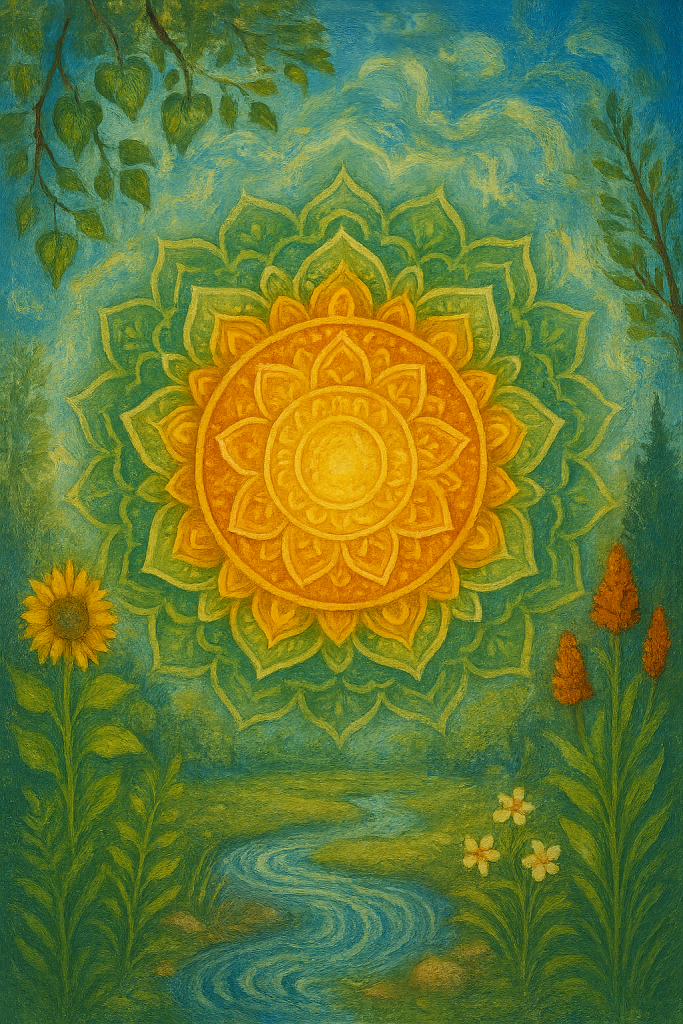What We Let In: A Love Letter to the Sacred Body
“Just as we clean our homes and bodies, so too can we clean the space within—by becoming conscious of what we let in.”
From the food we eat to the thoughts we think, every layer of input shapes our body, mind, and soul. Rooted in ancient yogic wisdom and affirmed by modern science, this article invites us to become conscious guardians of our inner temple. It calls for gentle yet fierce boundaries—not out of fear, but out of love and self-respect. Because what we allow into our system does more than influence a moment; it transforms who we are becoming.

Awakening into your Sacred Temple
Every morning, as I rise, I make a choice—one that seems small but profoundly shapes my state and the hole day. I don’t rush to my phone or scroll through the news. I sit quietly, walk into nature, or rest in stillness with myself. If I read, I read something that carries a high vibration—usually ancient yogic texts filled with devotion, not data. This is not escapism. It’s calibration. Because what I allow in—into my senses, my thoughts, my gut—becomes part of me.
I once have been told that, every morning, we are born again, and that, each evening, we are dying. So, my dear, how would you like to be born?
What we let in matters. So, so much.
The Many Layers of Input
We often think of “input” as digital—what we read, what we watch. But from a holistic perspective, input is everything that enters our system:
- The food we eat: Nutrients, chemicals, and even the emotional state of how that food was prepared or consumed affect our microbiome and energy.
- The people we surround ourselves with: Relationships are energetic ecosystems. Neuroscience now confirms what yogic sages have long said—our nervous systems are co-regulating. Simply being near someone anxious or angry shifts our own internal state.
- The information we consume: Books, screens, media. Each piece of content is not passive. It stimulates thought patterns, hormonal changes, and emotional states.
- Our own thoughts and emotions: In yogic science, thought is considered a form of prana—life force. Repetitive thought patterns form grooves, or samskaras, in our mind-field, influencing both behavior and biology.
Yogic Wisdom: Pratyahara and the Sacred Gate
In the yogic system, there is a practice called Pratyahara—the fifth limb of the Eightfold Path of Yoga. It means “withdrawal of the senses,” but not in the sense of avoidance. It’s an intentional turning inward. A refinement of what we expose our consciousness to.
Yogis understood the senses as gates—entry points into our inner world. Just as a river’s purity depends on what flows into it, our mental and physical state depends on what flows through these gates. Practicing Pratyahara is to become a guardian at the threshold.
To make this clear: it is not suppression. It is an act of self-love and self-respect. We do not pretend the world is not loud, chaotic, painful. We simply choose not to let every frequency take root in our system. We create boundaries, not to reject life—but to protect our vitality, so that we can flourish and be of service to life.
Science and the Biology of Input
Modern science now affirms what ancient wisdom long held: the body is incredibly responsive to the information it receives.
- Microbiome: The bacteria in our gut shift dramatically with one meal. These microbes communicate directly with the brain via the gut-brain axis, affecting mood, immunity, and even decision-making.
- Neuroplasticity: Our brains are constantly rewiring. What we think, read, and feel sculpts neural pathways. Repeated thought patterns (even unconscious ones) literally carve themselves into our biology.
- Epigenetics: Even our genes are not fixed. They are like switches, turned on or off based on environment, emotion, diet, and mindset.
- Emotion and Physiology: Studies show that emotions like gratitude and love release oxytocin and serotonin—while chronic fear or anger floods the body with cortisol and inflammation. Emotions are not just feelings—they are chemical instructions.
You are not a closed circuit. You are an open system! And your system is listening—all the time.
Discernment Is Not Control. It’s Care.
There is a difference between controlling life and caring for life. Yogic practice is not about sterile avoidance—it is about sattva—clarity, balance, and peace. And from clarity comes discernment.
Discernment is the ability to ask:
- Does this food truly nourish me?
- Does this person uplift or drain me?
- Does this book, this show, this song open my heart—or shut it down?
- Does this thought lead me to contraction or connection?
Just as we clean our homes and bodies, so too can we clean the space within—by becoming conscious of what we let in. This is not about living in a bubble. It is about rooting in sovereignty.
Because if we do not choose what enters us, someone else will. Take this to heart.
Rapid Transformation: How Fast the Body Responds
Many people don’t realize just how quickly the system can change when we shift our inputs. Within days or even hours:
- The gut microbiome starts to regenerate.
- Hormones begin to rebalance.
- Stress markers like cortisol drop.
- Sleep deepens.
- Cognitive clarity improves.
- Even gene expression shifts in the direction of healing.
The body is not slow. It is intelligent. It just needs the right conditions to return to coherence. And those conditions begin with what we let in.
The Body as Sacred Soil
Imagine your body, your being, as a garden.
Every sound, every thought, every interaction—seed.
What kind of soil are you becoming?
What seeds are you allowing to take root?
What flowers do you want to grow there in ten years?
This is not metaphor, but reality. Yoga calls the body a temple, and neuroscience calls it a neurochemical feedback loop. But they agree on one thing: you become what you allow in.
Living with Gentle Boundaries, Fierce Love
Let us become gentle guardians of our own temple. Let us say yes to what feeds us—and no to what doesn’t. Let us soften, not shrink. Let us discern, not reject. Let us open, but wisely.
This is a practice not of fear—but of fierce love.
Because what we let in does not just shape a moment.
It shapes a lifetime.
And perhaps, even more deeply—
It shapes who we are becoming.
